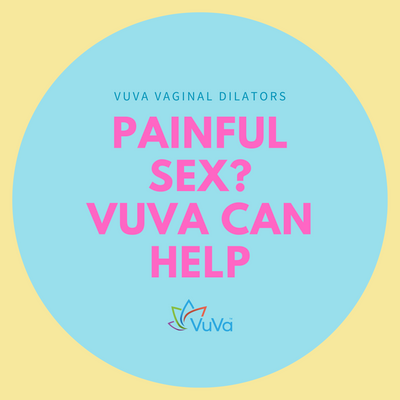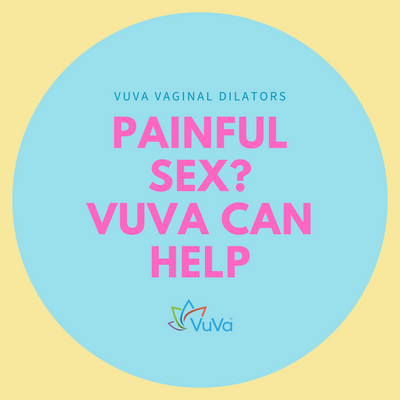
| Caroline Knight
Vulvodynia Diagnosis: What is the Q-TIP test?
Any woman who has suffered from vulvodynia pain will confirm that it is absolutely debilitating and profoundly impacts many aspects of life. Women with vulvodynia must also suffer the loss of pleasure from sex, difficulty exercising, walking or sitting, and the fear of unexpected flare-ups with no discernable cause. Needless to say, social life and working life can become difficult to manage.
Do you have vulvodynia? The answer may not be clear, but we are here to help with a Q&A on vulvodynia. This article aims to answer the most pertinent questions about vulvodynia, focusing mainly on vulvodynia diagnosis methods such as the Q-tip test. We will also cover the causes of vulvodynia and the most telling vulvodynia symptoms…
What is the Q-tip test?
The Q-tip test, also known as the cotton swab test, is one of the go-to vulvodynia tests performed by women’s health clinicians. They consider Q-tip testing to be one of the most accurate and necessary tools in the assessment of sexual pain; in particular, pain caused by vulvodynia and provoked vestibulodynia.
Q-tip testing involves a cotton swab or Q-tip to apply pressure to various (carefully mapped-out) areas within the vulvar and vestibular regions. This is done randomly, rather than in a specific order, so that the specialist can determine pain and sensitization levels.
How do I know if I have vulvodynia?
You may come to assume that your problem is vulvodynia through the symptoms alone, although they can vary a lot. Some women experience chronic and constant pain, while others can experience a range of symptoms, sporadically or intermittently. Some of the main vulvodynia symptoms are:
- Stinging pain
- Itching
- Burning pain
- Throbbing sensations
- Pulsating sensations
- Inflammation
- Muscle spasms
Vulvodynia pain can start or stop suddenly, making it unpredictable and thus difficult to manage. It could be that you go for months with no pain, and then symptoms reappear without warning and become chronic. There is often no real pattern to it.
It is important to remember that vulvar pain can have many origins, and many conditions share similar symptoms to vulvodynia. Furthermore, vulvodynia is a complex condition with no definitive underlying cause, and various possibilities (we’ll get into that later in the article). For this reason, it is important to get a proper vulvodynia diagnosis, which will likely involve the Q-tip test.
How is vulvodynia diagnosed?
To find out if you have vulvodynia, two checks are usually required. The first is an interview with a mental health professional. This interview is essentially a psychological assessment to gather information on what might be causing your pain, the affect it has on you, how long you have experienced it and what prompted you to seek treatment for it. They will endeavor to find out whether any comorbid disorders are present, what you have tried in terms of pain management and what the results were.
The next is a biological assessment with an appropriately trained health care professional; perhaps a pelvic floor physical therapist or gynecologist. Sometimes this professional will also do the psychological assessment. There are two types of vulvodynia, so they will be trying to determine which you have so that it can be treated accordingly.
Generalized vulvodynia
Generalized vulvodynia refers to the kind of chronic pelvic pain that affects the whole vulvar area. It can come and go, or be constant, and is easily aggravated by activities and behaviors such as:
- Wearing tight clothes
- Sitting for extended periods of time
- Riding a horse
- Pressure on the area (e.g. from a bike saddle or hard chair)
Some describe it as a burning pain – the sensation of the vulva being on fire.
Localized vulvodynia
Localized vulvodynia differs in that the pain is usually only felt in one or two specific areas in the vulva, with the pain also presenting as burning or stinging. It can sometimes feel as if a muscle is torn, or that the vagina is stretched. Pressure on one of these painful spots brings on, or exacerbates the pain.
How is the Q-tip test done?
Once the psychological interview is complete, your health care professional will begin the physical examination by doing a Q-tip test. Here’s what that may look like:
- You are placed in the lithotomy position with your legs in stirrups
- You will be encouraged to relax your muscles, if you can
- You will be informed of each step in advance so there aren’t any surprises
- A gauze pad will hold the labia minora in place so your vulval vestibule can be accessed
- The vestibule is divided into sections according to a clock face (don’t worry, this is not a physical division, but a mental map for your practitioner)
- A cotton swab (or Q-tip) is used to apply pressure to each section at random and you will be asked to rate the pain level on a scale of 1-10
- Your pain levels will be documented in order to confirm a diagnosis
This is a typical assessment for vulvodynia, but practitioners may use slight variations of this process according to their preferred methodology.
How reliable is the Q-tip test?
The Q-tip test is considered clinically reliable, although it is possible for some extent of human error to occur, given that the Q-tip test requires the pressure on each section to be consistent.
It is possible that a practitioner might use what is known as a vulvalgesiometer instead of a cotton swab or Q-tip test. A vulvalgesiometer is a device that exerts a set level of pressure on each section of the vulva.
What is the cause of vulvodynia?
Although it is not definitively proven, experts think that vulvodynia could be a form of neuropathic pain. This means that the vulval nerve fibers respond as if they were pain fibers, interpreting even very delicate touch as pain. Burning and stinging sensations often characterize neuropathic pain, which lends credibility to this theory.
There are three types of neuropathic pain that may cause vulvodynia:
- Allodynia: Pain sensations in areas that don’t normally hurt when pressure is applied
- Hyperalgesia: Excessive pain response to pressure that might usually cause a smaller degree of pain
- Dysesthesia: unusual levels of discomfort when the pressure is minimal
Although you might experience all three, experts usually consider vulvodynia to fall under the category of allodynia.
Other possible causes of vulvodynia are:
- Inflammation of the vulva
- Damage or irritation of the nerves of the vulva
- A response to long-term infection
- Food sensitivities
- Muscle dysfunction in the pelvic floor
- Genetic disorders
- Conditions impacting muscles or bones close to the pain site
- Autoimmune diseases like fibromyalgia and systemic lupus erythematosus.
What can trigger vulvodynia pain?
If you already have vulvodynia, you might experience a flare-up because of any of the following:
- Nerve injury or irritation
- Abnormal vulvar cell reaction to trauma, infection or chronic inflammation
- Pelvic floor muscle spasms
- Hormonal fluctuations or changes
- Pressure on the bowel or bladder (when full)
- Hypersensitivity to vaginal yeast infections (candida)
- Excessive antibiotic use (also causes yeast infection)
- Sexual trauma or abuse
- Allergic reactions (e.g. irritants in personal care products and laundry detergents)
- Stress
If you are searching for further information, this article gives some insight into the possible reasons for vulvodynia flare-ups, and some tips for managing vulvar pain.
We often hear the question, “Will my vulvodynia pain go away?” and we are always pleased to answer with something positive: yes, it can and with persistence probably will, but not on its own. So it is necessary to seek treatment from an expert. Many experts recommend using vaginal dilators for vulvodynia – in particular magnetic dilators, which increase blood flow to the area to soothe nerves – and many of our customers and clinic trial participants report great results with them.
Resources
Sandiegosexualmedicine.com/female-diagnostic-tests/cotton-swab-test
Vuvatech.com/blogs/care/is-vulvodynia-a-chronic-illness
Vuvatech.com/blogs/care/foods-to-avoid-with-vulvodynia
Vuvatech.com/blogs/care/vulvodynia-exercises-besides-dilators
Do you need to order vaginal dilators so you can start your pelvic floor therapy process? Made in the USA. Visit www.vuvatech.com
VuVa Helpful Links:
How do Neodymium Vaginal Dilators work?
7 Reasons for a Tight Vagina and How to Loosen
How to Relax Vaginal Muscles, Vaginismus & Sex
Vaginal Stretching - Keeping in Shape with Dilators
Do Dilators Really Work? Yes, and They can Improve Your Sex Life!
Shop for VuVa Vaginal Dilators
Tara Langdale Schmidt is the inventor of the VuVa Dilator Company. She has pelvic floor dysfunction herself and wanted to create a dilator set that is made in America that women can trust. VuVatech has been in business since 2014 and has helped over 50,000 women all over the globe. She patented the Neodymium Vaginal Dilator, that is clinically proven to help with blood flow and nerve pain.
















